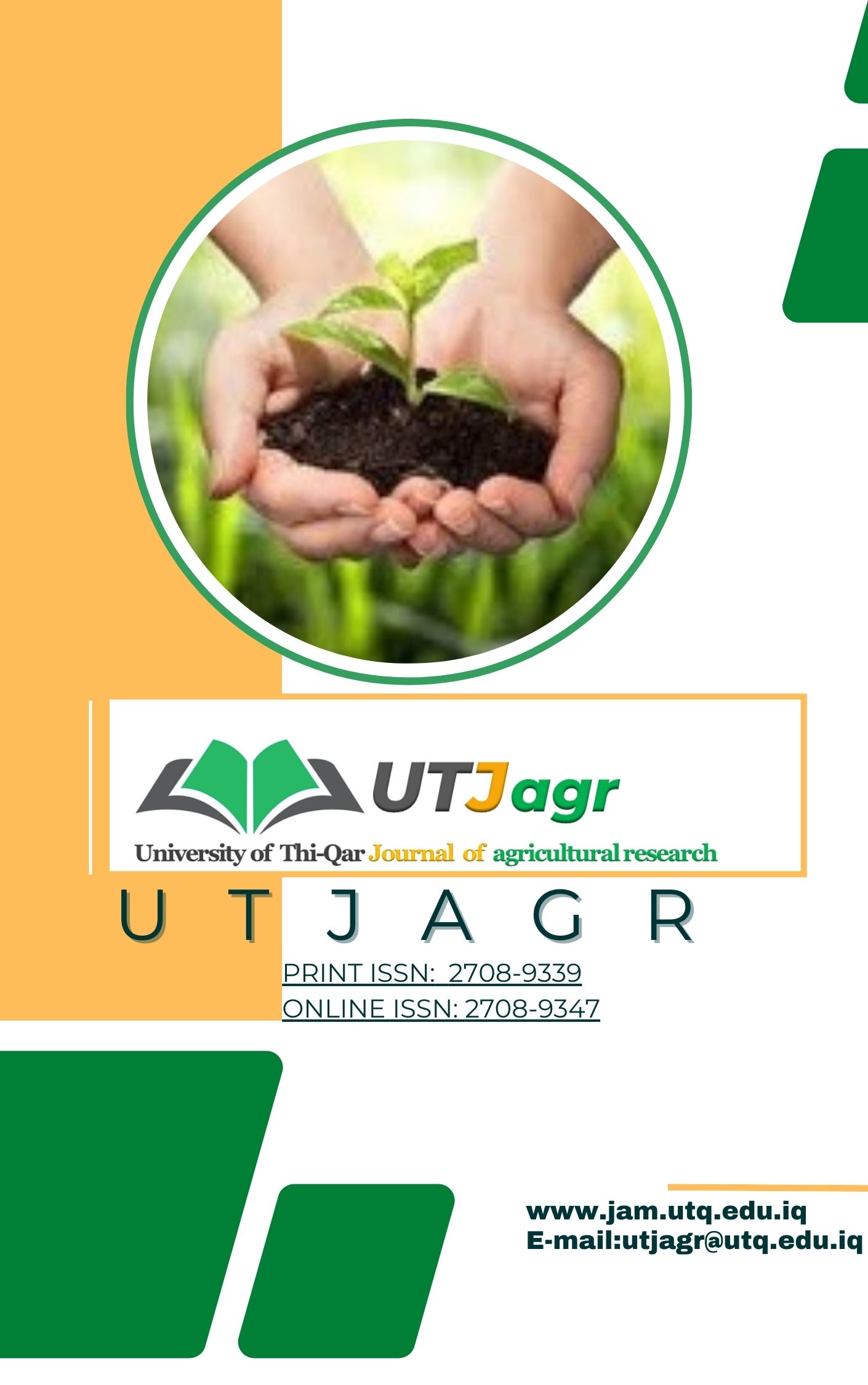Abstract
The experiment was carried out in one of the fields of the Agricultural Research Station affiliated with
the College of Agriculture - University of Basra / Karmat Ali site in the north of Basra Governorate in a
soil with a mixed clay texture..
The mechanical field experiment was conducted to study the performance indicators of the mechanized
unit using a complete randomized block design.RCBD by hard cut method Split – Split PlotAnd
threeReplications below 0.05 probability level. The experiment included studying the effect of four
shapes of the undercut weapon (cut 20 cm, cut 15 cm, pointed 20 cm, and pointed 15 cm) with three
ploughing depths (15, 25, and 35) cm in addition to two forward speeds, which are 1.87 km/h and 2.74
km/h., inDrag force and slip dustrubted area and Pulverization Index fuel consumption. The results
indicated that the depth of 15 cm was superior in recording the lowest pulling force, as the second speed
recorded the lowest pulling force of12.915 kN at a depth of 15 cm, while the triple interference showed
the superiority of the 20 cm wide pointed weapon, as it recorded the lowest pulling force of8,019 kN at
the same depth.And alsoThe 20 cm wide tapered weapon showed superiority in giving the lowest
percentage of wheel slip of 31.37% while the weapon was recordedTraditional digger ploughThe highest
percentage of slippage was44.4% It also excelled in giving the lowest fuel consumption rate of4.782L/ha.
While the 20 cm wide cut weapon outperformed in increasing the percentagefragmentationsoilso The
smallest diameter of soil clods was recorded at 28.79 mm. The traditional chisel plough also
outperformed the conventional tillage plough in terms of loosened area and recorded the highest
percentage of 459 cm2.
the College of Agriculture - University of Basra / Karmat Ali site in the north of Basra Governorate in a
soil with a mixed clay texture..
The mechanical field experiment was conducted to study the performance indicators of the mechanized
unit using a complete randomized block design.RCBD by hard cut method Split – Split PlotAnd
threeReplications below 0.05 probability level. The experiment included studying the effect of four
shapes of the undercut weapon (cut 20 cm, cut 15 cm, pointed 20 cm, and pointed 15 cm) with three
ploughing depths (15, 25, and 35) cm in addition to two forward speeds, which are 1.87 km/h and 2.74
km/h., inDrag force and slip dustrubted area and Pulverization Index fuel consumption. The results
indicated that the depth of 15 cm was superior in recording the lowest pulling force, as the second speed
recorded the lowest pulling force of12.915 kN at a depth of 15 cm, while the triple interference showed
the superiority of the 20 cm wide pointed weapon, as it recorded the lowest pulling force of8,019 kN at
the same depth.And alsoThe 20 cm wide tapered weapon showed superiority in giving the lowest
percentage of wheel slip of 31.37% while the weapon was recordedTraditional digger ploughThe highest
percentage of slippage was44.4% It also excelled in giving the lowest fuel consumption rate of4.782L/ha.
While the 20 cm wide cut weapon outperformed in increasing the percentagefragmentationsoilso The
smallest diameter of soil clods was recorded at 28.79 mm. The traditional chisel plough also
outperformed the conventional tillage plough in terms of loosened area and recorded the highest
percentage of 459 cm2.
Keywords
fuel consumption
loose soil area
traction force
Undercutting force
